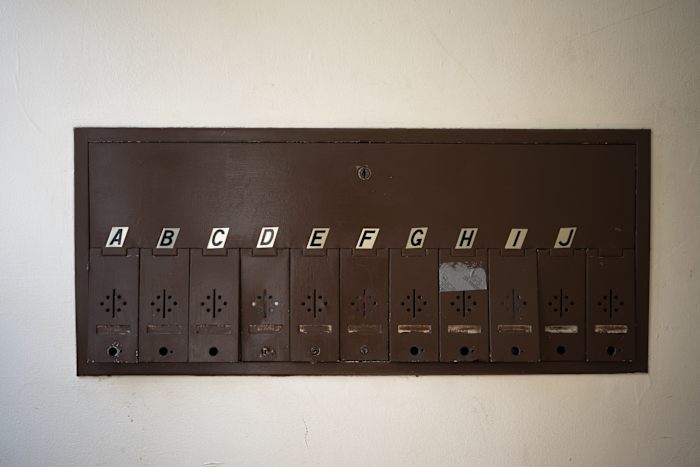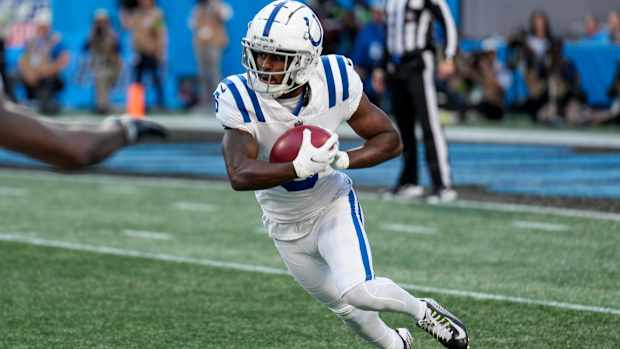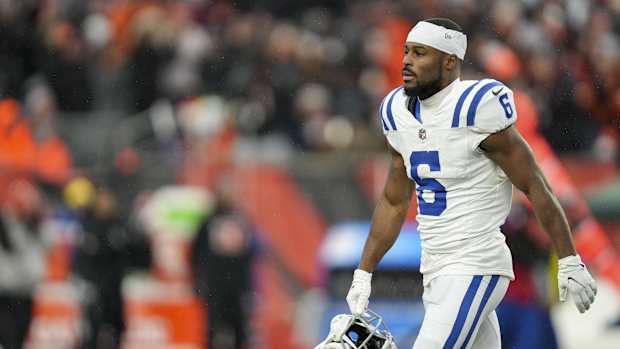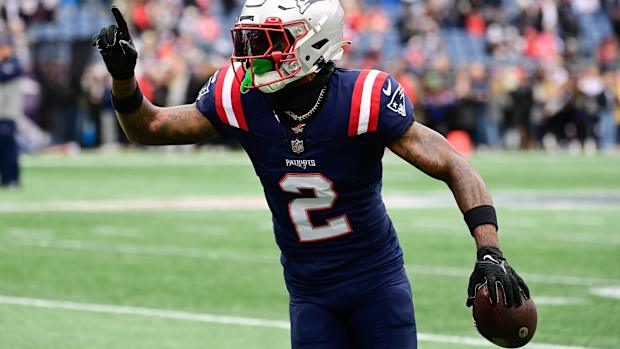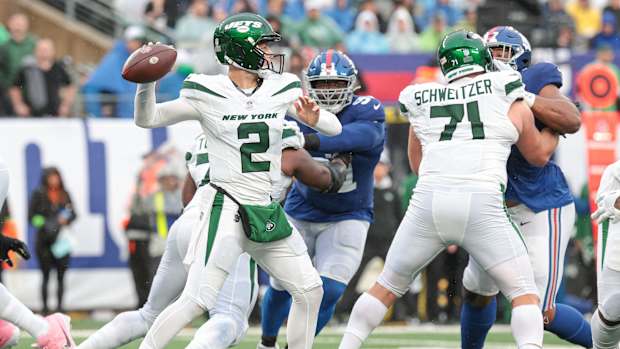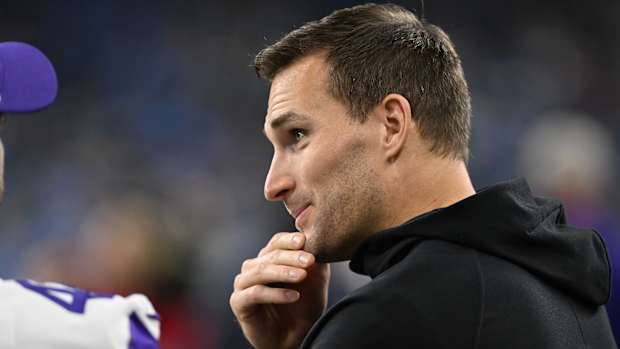Unveiling the Most Telling Numbers of Another Lost New York Giants Season
What a turbulent, news-filled week it has been for the New York Football Giants.
In the hours immediately following the team’s underwhelming 22-7 loss to the Washington Football Team in the season finale, all eyes shifted towards Giants ownership–John Mara and Steve Tisch–to see what moves the pair would make to the general manager and head coaching spots in the wake of another lost season.
As was primarily anticipated, general manager Dave Gettleman retired on Monday after four years with the organization. The 70-year-old concludes a 22-year career as an NFL front office executive and leaves the Giants with a 19-46 overall record since joining them in 2017.
Then after much deliberation, Mara and Tisch’s gavel came down on head coach Joe Judge the next day, a somewhat stunning change of plans considering the growing whispers that Judge would likely get a third season.
However, with a six-game collapse and series of public responses that suggested Judge might have been losing control of the situation, the alarm had sounded for the organization to hit the reset button and fire the head coach. Judge finished with a 10-23 record and is the third consecutive head coach to be let go after two seasons.
Now the Giants’ focus turns towards finding the next candidates for the two positions and rebuilding the team for the future. Interviews are already underway for the new general manager, who, once hired, will lead the search for the next head coach.
As we await what the future of the Giants organization looks like, let's take one last look back at 2021 at how the Giants ended up with a 4-13 season that came crashing off the rails in light of many injuries, staff turnover, and one of the worst offenses in the modern NFL.
Offensive Scoring Drops to 9.3 points/game
As the New York Giants approached the start of the season—their second under the Judge-Gettleman era—there was much excitement abound over the offense and its renewed health.
Quarterback Daniel Jones entered his third season with the team since being drafted No. 6 overall in 2019. The Duke product saw 14 starts in the 2020 season in which he completed 62.5% of his passes for 2,943 yards, ten touchdowns, and eleven interceptions.
Unlike the previous season, Jones would finally have a completely healthy offensive arsenal to work with. His top rusher, Saquon Barkley, returned to the active roster after a grueling 15-month-long rehab from an ACL tear that caused him to miss most of 2020.
The offensive line was supposed to be better in Year 2 after the previous year's infusion of young talent. And the Giants front office dedicated much of their offseason spending towards loading Jones up with receiving weapons.
Wide receiver Kenny Golladay—the 2019 NFL receiving touchdowns leader—came over from the Detroit Lions on a 4-year, $72 million deal to provide another deep-ball threat. Former Vikings tight end Kyle Rudolph also signed with the Giants in free agency to bolster the pass blocking and complement fellow tight end Evan Engram in the passing game.
Throw in John Ross, rookie Kadarius Toney, and the returns of Sterling Shepard and Darius Slayton, and there were high expectations for the Giants offense to become one of the most talented groups in the league in 2021.
Unfortunately, the lofty production levels never came to fruition.
Through the first 11 weeks of the season, the Giants were marred by relentless injuries that prevented them from achieving any form of stability within the offensive depth chart. After missing time during training camp with a lingering hamstring injury, Golladay spent four games on the sidelines with an ankle injury suffered in Week 5 against Dallas.
The walking wounded didn’t stop there, as Barkley also suffered an ankle injury in the 44-20 loss, leading the running back to miss four games after losing most of the previous year to the ACL injury. The rest of the Giants receiving corps—notably Shepard and Toney—were constant members of weekly injury reports due to several rotating issues.
With the oft-depleted rotation came some of the lowest offensive numbers in the league. The Giants averaged 17.2 points per game while tallying under 300 yards of total offense per contest (293.2) in that span. A major cause for such low scoring was the production of the run game, which hung far below the 100-yards per game mark due to the weak offensive line lending virtually no holes for the combo of Barkley and Devontae Booker to break through.
However, when the Giants had the ball inside the opponent’s 20-yard line, their inability to score six points was most apparent. The Giants had the NFL’s worst red-zone scoring rate for much of the season, converting drives into touchdowns just 45.5% of the time in that area of the field.
In most cases, the team resorted to a conservative approach in four-down territory, settling for field goals from Graham Gano. The veteran kicker finished the year as the team’s leading scorer (104 points), but his leg alone couldn’t prevent the Giants from being outscored 246-179 and losing three of their first eleven games by 20 or more points.
Following the Giants 30-10 primetime loss to the Tampa Bay Buccaneers in Week 12, where the offense put up their lowest total yardage in a game to date (215 yards), Judge ousted offensive coordinator Jason Garrett after 26 games and handed the play-calling duties to Freddie Kitchens.
Still, nothing improved for the Giants’ woeful offense. Instead, the issues only intensified.
The Giants lost the final six games behind Kitchens and a rotation of Mike Glennon and Jake Fromm filling in for the injured Daniel Jones. They averaged 9.3 points and 231.3 yards of offense per game. They scored a total of 5 touchdowns and had a stretch of 35 possessions with one score.
Their Week 18 loss to Washington earned them the sixth straight defeat by ten or more points, the longest active streak in team history.
Standing at the podium for what would be his final postgame presser as head coach, Judge proclaimed the Giants offense as a top priority for improvement in the offseason and promised to tackle it head-on.
“I don’t think it takes much thinking to go ahead and list the offensive production as an obvious thing we’ve got to correct immediately around here,” he said.
The irony is that Judge won’t be able to live up to that promise now.
Defense’s Eight Game Turnover Streak
One question worth asking about the Giants 2021 campaign is how much further the organization would have plunged in their downward spiral if not for their undervalued defense.
Led by defensive coordinator Patrick Graham, the Giants defense earned themselves recognition across the league for their unrelenting effort in keeping the team competitive despite miserable performances by the offense.
They held opponents to 24.5 points allowed while giving up a median 366.9 yards of total offense per game. With injuries and COVID bouts taking members of their unit off the field for different stints, they limited offenses to under 40 percent on third-down conversion percentage, sacked quarterbacks 34 times for 205 yards, and dominated the line of scrimmage to prevent rushing attacks from scraping more than 129 average yards on the ground.
Yet, the defense’s most significant contribution to the team’s competitiveness came in the turnovers front, where Graham’s group became one of the hottest units in that area of the game.
Before Week 13, the Giants defense was ranked fifth-best in the NFL in turnovers, amassing 21 total with 13 of those coming through the air on interceptions. Not only were the Giants ballhawks taking the ball away from opponents, but they also did so at an incredible pace as they stacked up a streak of eight consecutive games with at least one turnover. It was the longest active streak in the entire league at that point in the season.
Two of the Giants' best performances of the season–each resulting in dominant home victories for Big Blue–happened during that eight-game stretch when the defense forced multiple takeaways against some of the better offenses on their schedule.
Before their bye week approached in Week 10, the Giants hosted a Las Vegas Raiders team that was heavily consumed in off-the-field drama but expected to leave MetLife Stadium with a routing victory.
While the Raiders accumulated 403 yards of offense that Sunday, the Giants defense never let them run up the scoreboard, stepping up big time to force quarterback Derek Carr into two interceptions and a late-game fumble to give the Giants a 23-16 upset.
The Raiders were also limited to 1-6 in red-zone conversion rate, the lowest percentage recorded by a Giants’ opponent with at least one attempt.
Then, in the Giants’ Week 12 victory against the rival Philadelphia Eagles, the defense rose to the occasion once again to completely turn the tide in what was New York’s most drawn-out win of the year.
Against Jalen Hurts and a dangerous Eagles option-heavy offense, the Giants defense thwarted every chance at a sustained drive by holding the Alabama-bred quarterback to 14 completions for 129 yards and forcing him to throw three interceptions.
In all, the Eagles had four turnovers, and the Giants squeaked out a hard-fought 13-7 win to extend their home streak against the divisional enemy to two straight games.
The Giants’ defensive streak met its’ fateful end in Miami in Week 13. Dolphins quarterback Tua Tagovailoa marched all over the Giants' defense to the tune of 244 passing yards, two touchdowns, and an error-free performance, as Miami stole the homestand, 20-9.
More from Giants Country
Quarterback Play, Post-Jones Injury
If anything, losing Daniel Jones to a season-ending neck sprain in Week 12 revealed to the Giants one of their most significant offseason needs once the next general manager-head coach duo is selected. Specifically, they have to provide their non-durable starting quarterback with much better backups if an injury strikes again.
When Jones was diagnosed with a neck injury shortly before the trip to Miami, the Giants were left with two options at the quarterback position–Mike Glennon and Jake Fromm. The veteran Glennon signed a 1-year, $1 million contract in the offseason after spending his first nine years on several NFL rosters and had a dismal six wins as a starter.
Fromm, the former star from the University of Georgia, was signed off the Buffalo Bills’ practice squad to serve as the backup.
In fairness, both Glennon and Fromm weren’t thrown into the greatest of circumstances when their respective numbers were called. The offense was severely banged up, and more absences piled up weekly due to cases of COVID-19 ravaging the locker room. Still, neither quarterback could fill the void left by the third-year starter, and the result led to some of the most horrifying performances in recent NFL memory.
Glennon led the Giants to battle in five of their last six games but never came out a victorious general. The former Jaguars quarterback finished with 90 completions out of 167 passing attempts for 790 yards, four touchdowns, and ten interceptions.
Mobility was certainly something Glennon lacked, and it greatly limited his ability to escape pocket pressure and extend plays as Jones did with his motor. Glennon was sacked nine times for a total of 68 yards, the second-most on the team.
Pushing the ball downfield wasn’t in the cards either, as Glennon was not gifted with the same “dime” throwing arm that his predecessor flaunted every game. He averaged the second-lowest yards per pass attempt among Giants passers with at least one completion with 4.7 and had just one long pass of 60 yards.
Most of the time, Glennon settled for poorly thrown dink-and-dunk tosses off his back foot that led to very minimal forward progress for the offense, and any deep-ball shots were taken the other way in an interception.
Glennon’s worst game in a Giants uniform came in Week 17 at Soldier Field against one of his former teams, the Chicago Bears. In a 29-3 loss, the former Bear was stifled by Chicago’s defense from the first possession, turning over the football on the Giants first two drives en route to an abominable four completions for 24 yards and two interceptions.
The Giants offense had -10 net passing yards when Glennon’s day was done, the lowest net total by an NFL franchise since the 1998 San Diego Chargers had -4 with Ryan Leaf under center. That outing helped Glennon finish 2021 with a 12.1 QBR and a 49.7 passer rating, his year ending with a wrist injury before the season finale.
The Giants did bench Glennon for one game, and it allowed Fromm to make his first career NFL start in the Big Apple. Yet, earning his chance on the road in Philadelphia in Week 16, Fromm went on to be the trendsetter of the sub-30-yard passing performance and fell victim to the pressure of the bright lights.
Playing in a stadium the Giants haven’t left victorious since 2014, the Eagles defense carved up Fromm. The 2020 fifth-round pick by Buffalo struggled to establish any sort of passing attack, completing only six of his 17 pass attempts for 25 yards, one interception, and a final QBR of 4.3. Judge ultimately benched Fromm in favor of Glennon at the start of the second half, solidifying a horrifying welcome to the NFL for the once bright-eyed player.
“I don’t think it gets much worse than that,” Fromm said in his postgame press conference after his debut.
As it turned out, it wasn’t, as Fromm would earn another chance in the season finale against Washington. Despite another loss on his record, Fromm improved his stat line to 15 of 31 for 103 yards while throwing his first-career passing touchdown to Darius Slayton in the fourth quarter.
The statement still holds regarding the Giants’ quarterback play this season, one of the biggest trends to secure another losing season.
Two-Minute Offense/Defense Woes
This overall trend has been one that’s appeared a couple of times in previous “Numbers” analyses.
However, if you’ve been following the pieces this entire season, you know it’s because the stat has grown steadily with each game and definitively impacted the Giants' ability to remain competitive in a handful of their games despite the defense keeping them close.
What am I talking about? The Giants’ scoring deficiencies in the final two minutes of a half.
The Giants have been the league’s worst team at putting points on the board throughout the season. At the end of Week 18, the Giants were outscored 79-0 in the final two minutes of either half.
One of the leading causes of their strife in the final 120 seconds of play this year has been the inability to drive going. By now, it sounds like a broken record, but the Giants had several examples of not protecting the quarterback long enough to execute meaningful plays and move the ball downfield in a close of half possession. The result was a quick punt back to the opposing offense in excellent field position and a disadvantage for the defense.
The best example of this failure by the Giants offense could be found in Week 14 against the Los Angeles Chargers, a game that ultimately ended a 37-21 rout but didn’t do the real blowout potential it had any justice.
With 1:40 left in the first half that Sunday, Mike Glennon and the Giants offense received the ball after the defense held Los Angeles to a three-and-out possession and maintained a 17-7 deficit. The Giants started at the Chargers’ 41-yard line, which would have been easy conversion territory for most other teams.
However, instead of moving proficiently towards the end zone and sneaking in at least a field goal before the break arrived, the Giants went backward and ultimately collapsed.
Glennon threw two incomplete passes and had one pass go for a loss of two yards to bring up a quick fourth down-and-12. In a matter of about 50 seconds, the Giants had to punt the ball back to the Chargers, who benefited from poorly executed an 18-yard pin down by punter Riley Dixon and started at their own 25.
Quarterback Justin Herbert had 52 seconds to get the ball into his kicker’s range, yet he only needed half of that time to punish the weary Giants’ defense. In 23 seconds, Herbert and the Chargers marched 75 yards, largely with the help of a 59-yard reception by receiver Jalen Guyton, and turned the big play into a touchdown to add more salt to the Giants’ 24-7 wound at halftime.
That wasn’t the only instance where the Giants' offense was awful at moving the football and keeping their exhausted defense off the field. It happened in several of their losses where they relied too heavily on their defense to continue a shutdown performance, and it came back to bite them in the rear.
Even early in games like Week 17 in Chicago, the Giants offense turned the ball over twice deep in their own territory to put Patrick Graham’s crew in an unfair spot, and it led to two easy touchdowns for the Bears and a rapid 14-0 deficit.
Part of the problem has to fall on the shoulders of former head coach Joe Judge. One of the coach’s biggest criticisms among the media talking heads was his mismanagement of the Giants’ timeouts.
Judge was prone to wasting his team’s precious timeouts due to miscommunication on the play call or personnel miscues early in a half. That bad habit led to the Giants fighting to reach the sidelines to stop the clock during a late possession.
Thus, whoever the Giants select to be the next head coach in the coming months, they must recruit an offensive guru with a mind for schemes that thrive in two-minute drills and who knows how to manage the clock to allow the opportunity to execute such drives late in the second or fourth quarters.
Poor execution can’t remain a problem for the Giants in the modern NFL, where high levels of offensive production have become the norm. That was seen exposed under the Judge hierarchy, with the Giants losing a total of six games by 20 or more points under his leadership. That number is more than the total of Judge’s two predecessors—Ben McAdoo and Pat Shurmur—in the same stretch combined.
For Mara and company, you either innovate the offense or get left behind in the NFL scoring race.
Join the Giants Country Community
- Sign up for our FREE digest newsletter
- Follow and like us on Facebook
- Submit your questions for our mailbag
- Listen and subscribe to the daily LockedOn Giants podcast.
- Subscribe and like the new LockedOn Giants YouTube Channel
- Sign up for our FREE message board forums

